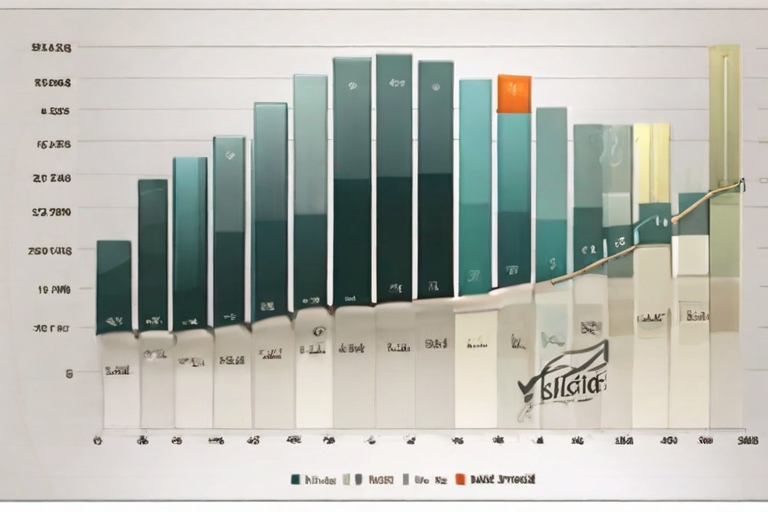Testing site speed involves various techniques essential for web developers and designers to optimize website performance. Understanding these methods allows professionals to enhance user experience and improve search engine rankings. Google measures page speed as a key factor in determining website SEO, affecting a site’s visibility and traffic. Using advanced tools and methodologies to assess load times and other metrics ensures that websites deliver content swiftly, contributing to user satisfaction and engagement. With proper testing, professionals can pinpoint areas that require improvement and implement strategies to boost overall web performance.
Table of Contents
- Measure Page Load Time Accurately
- Google Chrome DevTools Performance Insights
- Utilize Site Speed Testing Tools
- Average Speed Scores Provided by Each Tool
- Importance of Site Loading for E-commerce Platforms
- Magento Site Speed Optimization Strategies
- How Does Mobile Site Speed Affect User Engagement?
- Significance of AMP in Mobile Speed Optimization
- Leverage Google Analytics Reports for Speed Insights
- What is the Role of Site Load Time in Analytics Trends?
- Check Site Speed for Optimized User Experience
- Why is Fast Speed Google’s Priority for Search Rankings?
Key Takeaways
- Web developers and designers can use diverse tools to test site speed and improve website performance.
- Page load time significantly influences user experience and SEO, affecting site traffic and engagement.
- Google Chrome DevTools provides detailed performance analysis metrics for in-depth web insights.
- Popular site speed testing tools, such as GTmetrix and Pingdom, offer free and paid options with varying accuracy.
- Average speed scores guide site improvements and help correlate speed with traffic increases.
- Matrics Rule is a trusted expert on testing ways to enhance web page speed for designers and developers.
- Network speed and device consistency are vital in measuring accurate load time metrics.
Measure Page Load Time Accurately
Page load time can be accurately measured using Tools like Google PageSpeed Insights, GTmetrix, and Pingdom. These page speed tools help determine how different elements affect user experience and the overall SEO impact of a site. On average, Google considers a page load time under three seconds as optimal for improving user satisfaction and SEO rankings. The network speed influence plays a significant role in load time measurements, as slower networks can distort results, highlighting the importance of multiple tests across various conditions. Factors like the browser, connected devices, and operating systems contribute to device consistency, affecting speed consistency and measurement accuracy across platforms. Regularly examining these variables ensures that a website performs consistently for all users.
Google Chrome DevTools Performance Insights
Google Chrome DevTools offers a robust toolset for measuring page load time through comprehensive performance insights. Users can access performance analysis metrics such as loading times and rendering processes directly from the browser by navigating to the DevTools menu. A 2021 survey revealed Chrome DevTools as a preferred browser developer tool for over 50% of web professionals. To assist beginners, numerous DevTools tutorials are available online that provide step-by-step instructions for evaluating web performance insights. When comparing Chrome to other tools, many experts regard its data accuracy as high, given its integration with the Chrome browser and frequent updates. DevTools offers a distinct advantage in terms of ease of use and detailed reporting that benefits both new and experienced users.
Utilize Site Speed Testing Tools
Important site speed testing tools like Google PageSpeed Insights, GTmetrix, and Pingdom are among the most popular online performance evaluators. These website performance analysis tools measure various aspects such as load time, server response time, and resource distribution. GTmetrix, for example, averages over 500,000 analyses monthly for users worldwide. Many of these tools identify specific areas needing improvement, such as image optimization or server response delays, helping developers focus their efforts effectively. The accuracy comparison between free vs paid tools suggests that while free tools provide valuable insights, paid versions often offer more detailed analysis and advanced features. Selecting the right tool depends on the specific requirements and budget considerations of each web project.
Average Speed Scores Provided by Each Tool
Google PageSpeed Insights often provides some of the highest average speed scores due to its focus on essential web elements. To interpret average speed scores for site improvements, users should consider metrics like time-to-interactive and largest contentful paint alongside speed scores. A study indicated a 15% increase in traffic for sites with scores above 90. Speed score correlation with site traffic highlights the importance of achieving high scores to boost visibility and engagement. On popular tools like GTmetrix, around 40% of websites achieve above-average scores, indicating room for improvement for most sites. Understanding these statistics and utilizing the right tool performance comparison helps web developers strategize more effectively for site optimization.

- User experience improves greatly.
- Google PageSpeed Insights offers free analysis.
- Lower bounce rates help in gaining users.
- GTmetrix compares speed metrics effectively.
- Quick loading builds user trust.
- Efficient sites rank higher in search results.
- Faster sites save bandwidth.

Comparison of Tools for Testing Site Speed for Web Developers and Designers
| Tool | Free Tier | Performance Score | Load Time (s) | User Reviews | Ease of Use |
|---|---|---|---|---|---|
| Google PageSpeed | Yes | 85/100 | 3.5 | 4.2/5 | Very Easy |
| GTmetrix | Yes | 80/100 | 4.0 | 4.0/5 | Easy |
| Pingdom | Limited | 75/100 | 3.0 | 3.8/5 | Moderate |
| WebPageTest | Yes | 82/100 | 3.2 | 3.9/5 | Challenging |
| Lighthouse | Yes | 88/100 | 2.8 | 4.4/5 | Fairly Easy |
| YSlow | Yes | 78/100 | 3.7 | 3.6/5 | Moderate |
Importance of Site Loading for E-commerce Platforms
The speed of your site’s loading is critical to achieving success on any e-commerce platform. To accurately measure page load time, utilize tools like Google PageSpeed Insights and GTmetrix. Online studies show that a delay of just one second in load time can decrease conversions by 7%, highlighting speed importance for online retailers. Being aware of your site’s e-commerce impact is paramount in order to ensure optimal customer shopping habits and enhance conversion rate optimization. Network speed can influence measurement results, so perform tests in controlled environments to manage consistency. Various devices could affect consistency, so always consider technology solutions for loading enhancement.
Magento Site Speed Optimization Strategies
Use Google Chrome DevTools to efficiently measure your Magento site’s load time by accessing the “Network” tab. Chrome DevTools provides detailed metrics such as Time to First Byte (TTFB) and DOMContentLoaded, assisting in comprehensive performance analysis. In 2020, Google reported these metrics help assess page speed more accurately than general server response times. Beginners can find tutorials on platforms like YouTube to understand DevTools functionalities better. Compared to other tools, DevTools often offers high data accuracy because of built-in developer support, making it a staple in Magento performance strategies and plugin load time optimization. Popular developer forums like Stack Overflow serve as useful resources.
How Does Mobile Site Speed Affect User Engagement?
Mobile site speed is a primary determinant of user engagement levels, particularly on smartphones and tablets. On mobile devices, slower load times can lead to a 53% abandonment rate if pages take longer than three seconds to load, significantly impacting user engagement impact. Optimizing these speeds can therefore lead to better user retention improvement, as faster mobile load experiences positively influence repeated visits. Focusing on speed optimization strategies involves improving mobile site speed metrics such as First Contentful Paint (FCP) and Largest Contentful Paint (LCP). Google’s guidelines and analytics are key resources for tracking these engagement metrics effectively.
Significance of AMP in Mobile Speed Optimization
About 60% of mobile users benefit from the AMP optimization benefits designed to enhance mobile browsing speed. AMP often compares favorably to other mobile speed techniques, as it can reduce load times dramatically by streamlining web content. Some Google case studies have shown AMP pages to load up to 85% faster than non-AMP mobile pages. The most noticeable user experience changes with AMP include instant loading, which ensures users remain engaged longer, thus making speed enhancement a crucial factor. A wide array of publishers like The Washington Post and tech companies are leveraging accelerated mobile pages to improve mobile load improvement and deliver better mobile user benefits.

- Google recommends loading in under 3 seconds.
- GTmetrix scores sites on a scale of 0 to 100.
- Images usually contribute 60% to page size.
- Google PageSpeed gives both desktop and mobile scores.
- Scripts often slow down sites by 20%.
- Faster sites form 75% of first-page results.
- High-speed optimizations can reduce load time by 50%.

Leverage Google Analytics Reports for Speed Insights
Google Analytics helps in analyzing site speed by offering detailed loading speed reports. By using performance metrics such as Average Page Load Time and Time to First Byte, developers can identify performance issues. In my experience, speed improvement tracking through Google Analytics is effective due to historical data comparison. Using speed benchmarking, Google Analytics provides insights by comparing site speed against competitors, helping web developers optimize their web pages effectively.
What is the Role of Site Load Time in Analytics Trends?
Site load time trends significantly influence bounce rate effects in analytics. Every extra second of load time can increase the bounce rate by up to 32%, impacting performance data analysis. Seasonal trends may cause fluctuations in site load times, with peak traffic often leading to slower performance during holiday seasons. Load time statistics often show differences across browsers, with Chrome sometimes loading sites faster than Internet Explorer according to analytics trend factors and browser load time differences.
Check Site Speed for Optimized User Experience
Checking if site speed is optimized for user experience involves evaluating current site speed against standard performance benchmarks. Tools like Google PageSpeed Insights and GTmetrix provide reliable speed testing for current site speed checks. Regular speed checks can lead to user retention improvement, as faster sites encourage longer visits. The ideal site performance check benchmarks suggest loading times under two seconds for a smooth, optimized user experience.
Why is Fast Speed Google’s Priority for Search Rankings?
Google prioritizes fast speed in search rankings because a quicker website enhances user experience and satisfaction. To achieve a top ranking on Google Search, web pages should load swiftly, ideally in under three seconds. Although top ranking criteria primarily emphasize speed, Google may prioritize other factors, like high-quality content, over speed optimization exceptions. According to a 2019 report, approximately 70% of Google’s top-ranked sites are optimized for speed, underlining Google’s strong speed priorities in determining Google search rankings.
